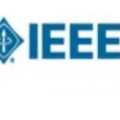Flying manipulators are aerial drones with attached rigid-bodied robotic arms and belong to the latest and most actively developed research areas in robotics. The rigid nature of these arms often lack compliance, flexibility, and smoothness in movement. This work proposes to use a soft-bodied robotic arm attached to an omnidirectional micro aerial vehicle (OMAV) to leverage the compliant and flexible behavior of the arm, while remaining maneuverable and dynamic thanks to the omnidirectional drone as the floating base. The unification of the arm with the drone poses challenges in the modeling and control of such a combined platform; these challenges are addressed with this work. We propose a unified model for the flying manipulator based on three modeling principles: the Piecewise Constant Curvature (PCC) and Augmented Rigid Body Model (ARBM) hypotheses for modeling soft continuum robots and a floating-base approach borrowed from the traditional rigid-body robotics literature. To demonstrate the validity and usefulness of this parametrisation, a hierarchical model-based feedback controller is implemented. The controller is verified and evaluated in simulation on various dynamical tasks, where the nullspace motions, disturbance recovery, and trajectory tracking capabilities of the platform are examined and validated. The soft flying manipulator platform could open new application fields in aerial construction, goods delivery, human assistance, maintenance, and warehouse automation.
翻译:飞行操纵机是空中无人驾驶飞机,带有附着的硬体机器人臂,属于机器人最新和最积极开发的研究领域。这些武器的僵硬性质往往缺乏合规性、灵活性和运动的顺利性。这项工作提议使用一个软体机械臂,附在全向微型飞行器(OMAV)的软体型机械臂,以利用手臂的合规性和灵活行为,同时由于作为浮动基地的无人驾驶飞机,仍然可以操作和动态。将手臂与无人驾驶飞机统一起来,给这种联合平台的建模和控制带来了挑战;这些挑战通过这项工作得到解决。我们提议了一个飞行操纵机的统一模式,其依据是三个示范原则:即:小常态螺旋(PCC)和增强型机体模型(ARBM),以模拟软体连续机器人的合规和灵活行为,以及从传统的僵硬体机器人文献中借用的浮基方法。为了证明这种双向式机器人的可靠性和实用性,一个基于等级模型的反馈控制器在这种平台的建模方面提出了挑战。我们提议了一个统一的飞行操纵器模型,在各种动态操作平台上模拟了飞行操纵机操作模型,在各种机动式的操作平台上检查了各种飞行器的运行,并检查了飞行操作平台的轨道上,可以进行操作。




